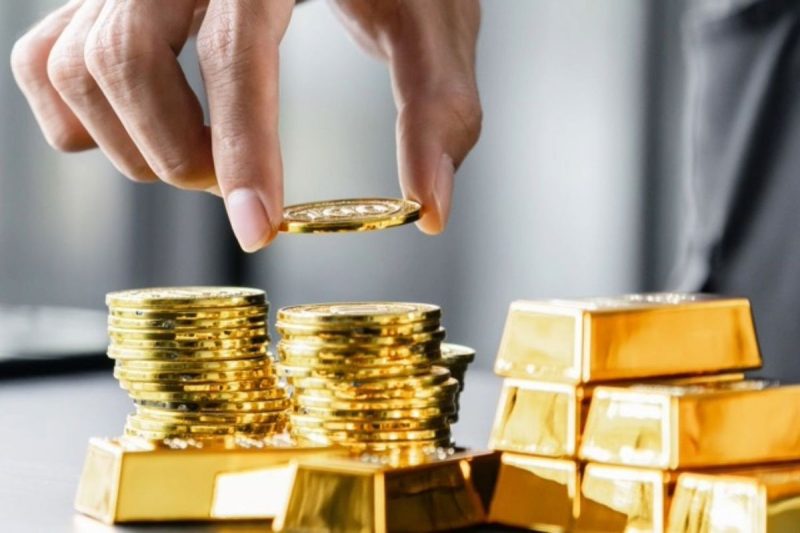By Darren Brady Nelson
US President Donald Trump’s “Liberation Day” tariffs certainly caused quite the stir in the markets on April 2.
Gold dropped about 6 percent, and silver 12 percent. A week later, a pause was announced, which ended on August 1. Gold and silver have since risen approximately 11 percent and 24 percent, respectively.
Six month gold and silver price performance.
Source: Trading Economics (gold) and (silver).
Unless you are a professional, or even amateur, trader, it is best to look at gold and silver investment with a perspective of years or decades, rather than just days, weeks or even months. Since the start of the COVID-19 panic in March 2020, gold and silver have exploded 123 percent and 192 percent.
10 year gold and silver price performance.
Source: Trading Economics (gold) and (silver).
In the shorter term, the gold price is driven by what economist John Maynard Keynes called “animal spirits.” In the longer term, it is driven by “monetary spirits.” And not just as protection, but also for performance. The Presidential Gold Guide highlights both in chapters four and five.
Source: Fisher Liberty Gold.
Gold unsurprisingly protects
Economist and investor Mark Skousen has wisely noted that: “Since we left the gold standard in 1971, both gold and silver have become superior inflation hedges.” Gold has more than countered the results of inflation, as measured by CPI, and the drivers of inflation, as measured by M3.
And the numbers back that up. The Gold Protects chart below compares the gold price, CPI and M3 in terms of cumulative growth of each from 1971 to 2025. That is throughout the whole era of gold as an investment, which officially started in 1974 once private ownership was restored.
During this era, gold grew by 541 percent, CPI by 214 percent and M3 by 384 percent. Annual average growth for gold was 10 percent, CPI at 4 percent and M3 at 7 percent. Maximums were 92 percent, 14 percent and 29 percent, respectively. CPI only failed to grow twice, ie. 0 percent in 2009 and 2015. M3 decreased twice, by -4 percent in 2023 and -6 percent in 2024.
Sources: FRED (CPI) (M3); World Bank (gold).
Gold surprisingly performs
The highly respected In Gold We Trust (IGWT) report states: “When dealing with the specific level of gold allocation, it is advisable to differentiate between safe-haven gold and performance gold. The Big Long strategy emphasizes the potential of performance gold in the coming years.”
IGWT thus recommends an investment portfolio ‘rule of thumb’ that includes 15 percent in “safe-haven gold” and 10 percent in “performance gold.” The Gold Performs chart below compares gold price, S&P 500 and nominal GDP in terms of cumulative growth of each from 1971 to 2025.
Gold grew by 541 percent, the S&P 500 by 484 percent and GDP by 339 percent. Annual average growth for gold was 10 percent, with the S&P 500 at 9 percent and GDP at 6 percent. Maximums were 92 percent, 45 percent and 14 percent, respectively. Gold did have a higher standard deviation of 27 percent, compared to 17 percent for the S&P 500 and 3 percent for GDP.
Sources: FRED (GDP); Shiller Data (S&P); World Bank (gold).
Animal and monetary spirits
Gold protects as a hedge or safe haven, not just from inflation, but from the flip side of that same coin of the boom-bust cycle. Both are driven, in the longer term, not by “animal spirits,” but by “monetary spirits.”
Inflation is when money inflation has a widespread impact as price inflation. A bubble is when money increases have a more concentrated impact such as in certain asset values. The bubble eventually bursts when “monetary spirits” are finally reined in by monetary realities.
I say “monetary spirits” because of the role of fiat money, as indicated by, say, M3. When money supply outstrips money demand in a localized way, then that is a bubble, and when in a general way, that is inflation.
The former shows up in certain asset, wholesale and/or producer prices, whilst the latter shows up in CPI. Asset prices include the S&P 500. But nominal GDP is also ‘ginned up’ as it is ultimately a price times quantity measure as well. Price is expressed in money terms.
Conclusion
Gold can have ups and downs, as standard deviation indicates, due to the “animal spirits” of fear and uncertainty, that tend to be daily, weekly or monthly. Yet gold both protects and performs due to the “monetary spirits” of inflation and boom-bust, which tend to be decennially.
In particular, gold performs when the S&P 500 does not, like in the aftermaths of the 2001/2002 dot-com collapse, the 2008/2009 global financial crisis and 2020/2021 COVID-19 lockdowns.
Therefore, when it comes to gold, “follow the money” of central bank “money printing” and fractional reserve bank “fountain pen money,” for both superior inflation protection and boom-bust performance.
And besides, Skousen rightly ‘begged the question’ as follows: “Gold and Silver have always had value, never gone to zero. Can you say the same for stocks and bonds?”
About Darren Brady Nelson
Darren Brady Nelson is chief economist with Fisher Liberty Gold and policy advisor to The Heartland Institute. He previously was economic advisor to Australian Senator Malcolm Roberts. He authored the Ten Principles of Regulation and Reform, and the CPI-X approach to budget cuts.
Click here to read Goldenomics 101: Follow the Money, and here to read Goldenomics 102: The Shadow Price of Gold.


